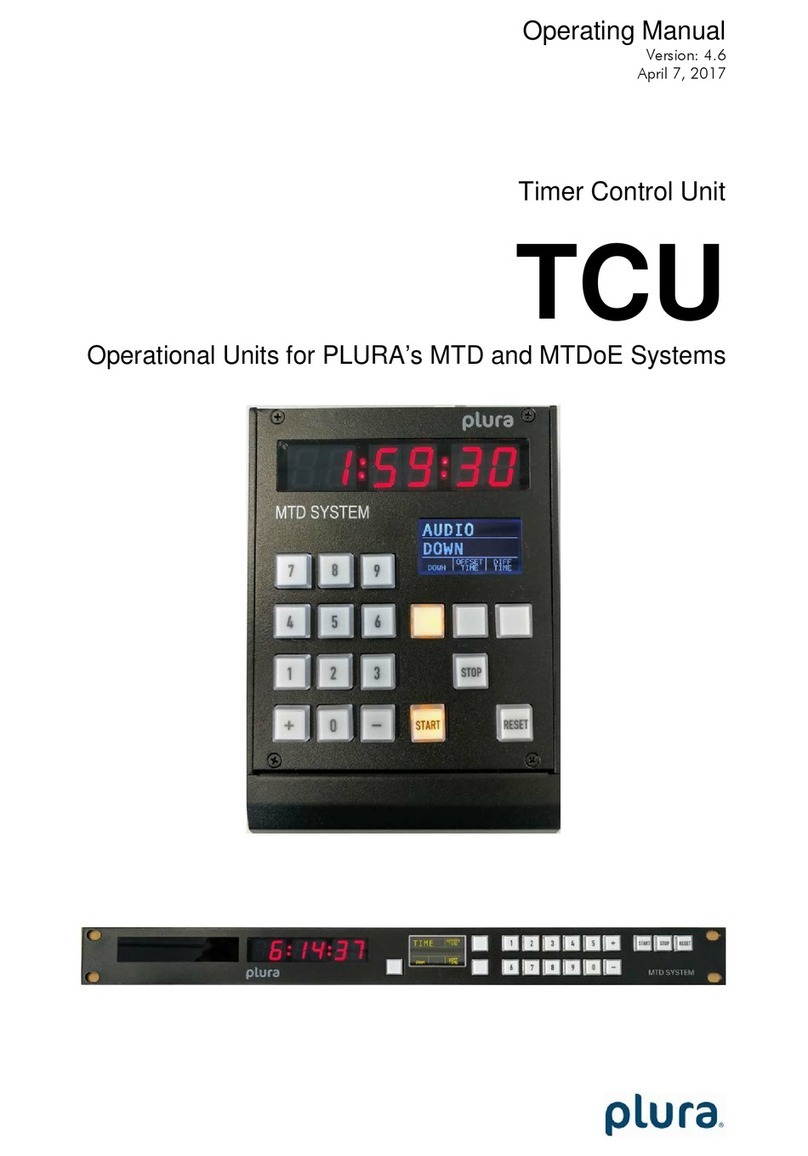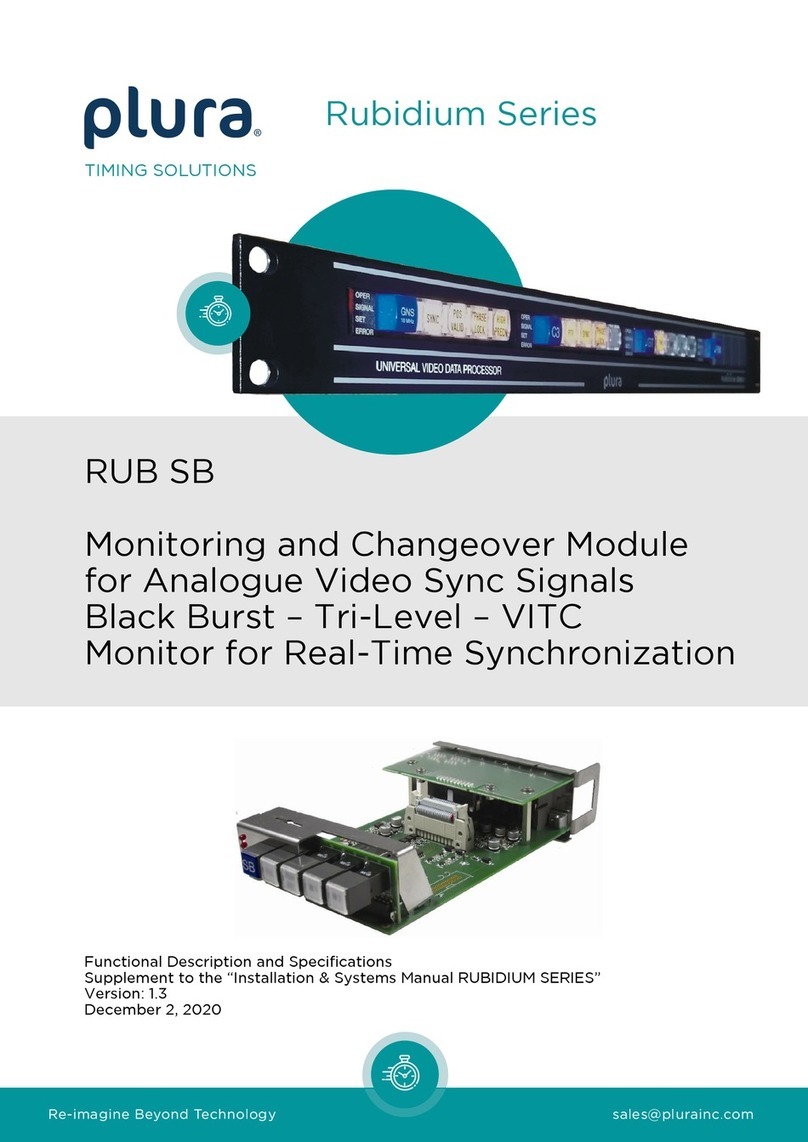Functional Description and Specifications RUB SW Page 7
1 Module “SW”
1.1 General Description
This module can supervise and analyse incoming Word Clock and DARS signals of two
sources. Each source can deliver up to four different Word Clock and two different DARS
signals. In the event of a failure of one source, SW automatically switches to the other faultless
source. The SW module is a must for all Word Clock/DARS systems where a failure proof and
redundant Word Clock and DARS is a requirement. Additionally, it offers a status monitor
indicating errors, failures, and status information of all incoming signals.
A PC or the RUB IE module is required for the configuration of this module.
The front panel label SW visibly identifies where each module is located. The serial number is
located on the bottom side of the lower circuit board of each module.
The standard hardware of this module has all of the following key features:
•“Hot Swapping“, i.e. it is possible to insert or remove a module without interrupting the
operation of other modules in this frame.
•Failure relay, connected to the FAIL_A and FAIL_B pins of the RLC connector at the rear of
the frame.
•RS232 and TC_link (RLC connector) interfaces to have access to the internal bus of the
chassis.
•Four programmable function keys, lamps and LEDs on the front panel (RUB1 version only).
•Flash memory containing the firmware, so configuration and updates are possible via a
PC connection. You can download the latest version of the program from:
https://www.plurainc.com.
•2 x 4 Word Clock inputs.
•2 x 2 DARS inputs.
•Changeover regarding the Word Clock and DARS signals utilizing latching relays.
•Alarm outputs indicating failures and warnings: Lamps and LEDs (RUB1 version only),
GPOs, SNMP traps, and entries in the log file of an Ethernet module.
•Inputs for signals of a real-time reference (PPS, time & date data string).































